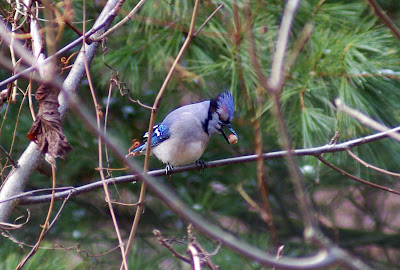 Photo by John Howard
Photo by John Howard
Follow us on a nature journey exploring the great state of Indiana. We will discover hidden treasures along the way, many that are found in our own back yards.
 Photo by John Howard
Photo by John Howard

 The old sledding hill. No, not really, but as a kid I THOUGHT it was that big!
The old sledding hill. No, not really, but as a kid I THOUGHT it was that big!I loved making snowmen, snow forts and enjoyed a good snowball fight. My older cousins had snowmobiles and when we visited my grandparents' farm, they would hitch an inner tube to the snowmobile with a long cord. They raced at top speeds across the fields with the inner tube and occupants bouncing all over the place. Talk about a thrill!

 Wilson A Bentley in 1925
Wilson A Bentley in 1925 Bentley Photos
Bentley Photos Sectored Plate
Sectored Plate Stellar Dendrite
Stellar Dendrite Triangular Crystal
Triangular Crystal Female cardinal-photo by John Howard
Female cardinal-photo by John Howard Young cardinal with gray bill
Young cardinal with gray bill House Finch male-photo by John Howard
House Finch male-photo by John Howard
Maps showing the distribution of the House Finch through time.
Despite its origin, the House Finch is a handsome bird. The males color can range from yellow to orange to red, with the darker red males being in demand with the females. Supposedly, the more brilliant the red, the better the male is at obtaining good food, rich in carotenoids, a chemical found in many plants that have red and orange color. The females will want to choose a male that can provide ample food for her and the brood. The female is white and brown streaked, so she is better camouflaged when sitting on the nest.

House finch female


American Goldfinch winter male, photo by John Howard

Shoulder patch in winter male
American Goldfinch are closely tied to their food source. They are granivorous or eat mostly seeds. Even when they feed their young, goldfinch rely mostly on a seed diet. The Brown-headed Cowbird, which parasitize many birds nests by leaving its young to outcompete the smaller birds, does not survive in an American Goldfinch nest. The cowbird likes a diet rich in insects, which it does not get from the mother goldfinch. Most cowbird babies have retarded growth and die before they can leave the nest. Also, the males brillliant yellow hue is due to the food they ingest. Carotenoid pigments that produce yellow and orange colors in many composites or flowers in the sunflower family which is a favorite food of American Goldfinch. The frequently feed on Prairie Dock, Compass Plant, Rosinweed, and sunflowers. I used to work at a native plant nursery and we would have to put netting over these plants to keep the goldfinches from destroying the seed crops. They could wipe out a whole row of plants in no time. Besides the composites, American Goldfinch also use thistle as a food source and to line their carefully woven nests.